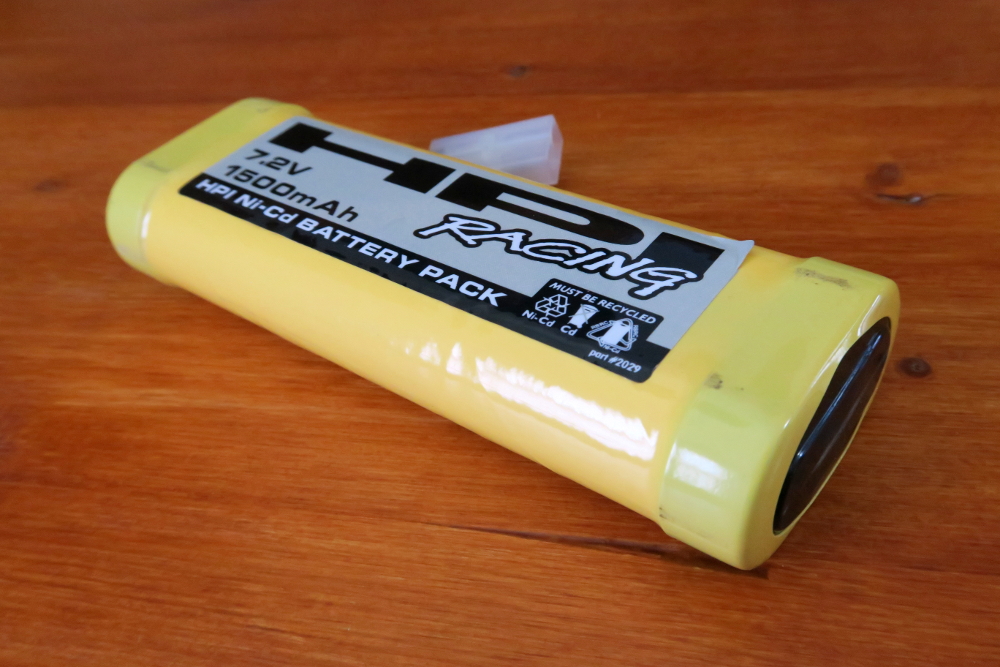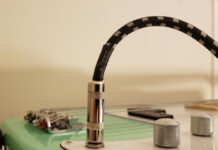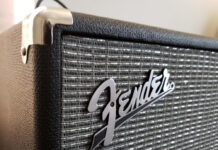
My question: What is the difference between LiPo vs NiMH?
When I started with radio-controlled cars, nickel-cadmium (NiCd) batteries were the standard. They were debated with the then-new technology — nickel metal hydride (NiMH).
Nowadays, we have lithium polymer (LiPo) batteries, which have advantages and disadvantages compared to NiMH and NiCd. I thought I would answer my question here with the research I’ve done.
- Charge Your Hobby: Venom Drive Series LiPo batteries are designed to meet the rigorous demands of today's RC enthusiasts. They deliver enhanced performance, safety, and cycle life, ensuring you have the power you need for endless fun.
- Unleash The Beast: With a powerful discharge rate, this 4000mAh 7.4V LiPo battery is ideal for a wide range of RC vehicles, including 2WD and 4WD cars, monster trucks, buggies, and even 1/10 brushless RC boats. The Venom Flak Jacket metal plates provide extra protection and durability, so you can push your limits.
- Power Source: Available in various sizes, capacities, and C rates, Venom Drive Series offers a battery to suit every application. As an industry leader in RC batteries and chargers for over a decade, Venom is a trusted name for unmatched power and performance.
- Fueling Features: This battery is engineered with advanced Lithium Polymer (LiPo) technology, boasting a discharge rate, 7.4 volts of operating power, a 5000 mAh capacity, two cells (2S configuration), and a maximum approved charge rate of 1C (5A), all designed to deliver reliable, max-performance power to keep your RC vehicle running at its finest.
- Plug & Play: Venom Drive Series comes with a 12 AWG soft and flexible low-resistance silicone wire for seamless connectivity. The Venom Universal 2.0 Plug System makes it compatible with Traxxas Plugs, Deans Plug, and EC3 Plug. Plus, its compact dimensions (138 x 46 x 24 mm / 5.43" x 1.81" x 0.94") and 37 Watt Hours ensure you have the power you need without sacrificing space.
Affiliate links / Images from Amazon Product Advertising API
- Charge Your Hobby: Venom Drive Series NiMH batteries are designed to meet the rigorous demands of today's RC enthusiasts. They deliver enhanced performance, safety, and cycle life, ensuring you have the power you need for endless fun.
- Unleash The Beast: With a powerful discharge rate, this 5000mAh 7.2V NiMH battery is ideal for a wide range of RC vehicles, including 2WD and 4WD cars, monster trucks, buggies, and even 1/10 scale brushless RC boats. The Venom Series metal plates provide extra protection and durability, so you can push your limits.
- Power Source: Available in various sizes, capacities, and C rates, Venom Drive Series offers a battery to suit every application. As an industry leader in RC batteries and chargers for over a decade, Venom is a trusted name for unmatched power and performance.
- Fueling Features: This battery is engineered with advanced Nickel Metal Hydride (NiMH) technology, boasting a discharge rate, 7.2 volts of operating power, a 5000mAh capacity, six cells (6S configuration), and a maximum approved charge rate of 1C (5A), all designed to deliver reliable, max-performance power to keep your RC vehicle running at its finest.
- Plug & Play: Venom Drive Series comes with a 12 AWG soft and flexible low-resistance silicone wire for seamless connectivity. The Venom Universal 2.0 Plug System makes it compatible with Traxxas Plugs, Deans Plug, and EC3 Plug. Plus, its compact dimensions (137 x 45 x 23.9 mm / 5.39" x 1.77" x 0.94 ") and 55.5 Watt Hours ensure you have the power you need without sacrificing space.
Affiliate links / Images from Amazon Product Advertising API
LiPo versus NiMH batteries
To me, LiPo batteries have an advantage over NiMH and NiCd.
LiPos are smaller in dimension and lighter.
They, also, are not limited to size and shape. Compare that to NiMH and NiCds, which use round batteries.
LiPo capacities and voltages are higher, too. This translates to more juice. With modern brushless motors, the more juice to the motor usually equates to more power and speed.
Good LiPo batteries, also, discharge at a different rate, which provides them with power. They have a flatter discharge rate. This means the same energy level will be available throughout the run.
NiMH lose energy as the run continues, which means the vehicle has less and less power until it won’t go anymore.
Now, LiPos are not perfect.
Their lifespan is short, lasting 300 to 400 cycles on average.
LiPos, also, are sensitive to how they are stored, charged, and discharged. Fire can result if the battery is punctured. This is important. They can be dangerous.
If you are haphazard about charging and safety, and you push products to the limit, you may want to consider NiMH.
NiMH are a little more user-friendly, I think. They may not have the same performance capabilities as a LiPo of the same size and weight, but they should be able to endure more charging cycles.
NiMH cost less than LiPos, which have specific charger requirements.
(Read customer reviews of good NiMH or LiPo batteries on Amazon.)
Application time!
Let’s apply this info to a real-world example.
NiMH batteries typically come in 6-cell, 7-cell, or 8-cell packs. The lowest voltage is from a 6-cell, which produces 7.2 volts. The highest NiMH is the 8-cell, which produces 9.6 volts.
LiPos typically come in 2-cell and 3-cell packs. They are labeled as 2s, which holds 7.4 volts, and 3s, which holds 11.1v.
A 3s LiPo has 1.5 volts more than an 8-cell. It’s possible to add more cells to a NiMH pack to increase voltage, but that increases battery weight and size.
Here’s a comparison
The DuraTrax NiMH 8-cell 9.6 volt pack weighs 20.99 ounces (595 grams) and dimensions are 5.4 inches x 1.9 inches x 1.7 inches (136 millimeters x 47 millimeters x 44 millimeters). Cost is around $50 bucks.
The HPI Plazma 3s 11.1 volt pack is 9.5 ounces (270 grams) and dimensions are 5.4 inches x 1.8 inches x 0.98 inches (138.6 millimeters x 46.6 millimeters x 25 millimeters). Cost is around $130 bucks.
Although dimensions are similar between the packs, the weight difference is very real — as is the cost!
NiMH vs LiPo 2s vs 3s video
I came across a video on YouTube, where somebody had compared a 2s, 3s, and NiMH in their Traxxas Rustler VXL — a truck with a good brushless motor. They did not change the gearing between runs.
In the video, they noted that their Rustler with a 7-cell NiMH 3000 mah had a max speed of 45.3 miles per hour. The 2s had a max speed of 47.1 miles per hour. The 3s had a max speed of 66.2 miles per hour.
Grumbles with NiMH
- New iD-Equipped Power Cell batteries deliver unmatched speed, acceleration and power in all Traxxas cars, trucks, and boats
- Premium quality, low-resistance cells; flexible, silicone-jacketed 12AWG wire; heavy-duty welded tabs; and Traxxas' High-Current Connectors
- Precision assembly with attractive, individually wrapped cells and clear overwrap complete the package
- Traxxas capacity ratings reflect the minimum capacity for the pack, not the maximum
- 3000mAh NiMH 7-C (Flat Pack) 8.4V Battery for Traxxas 1/10 scale vehicles or larger
Affiliate links / Images from Amazon Product Advertising API
NiMH are great batteries when they are fully charged, but I don’t like how they discharge while using them.
When you use them, they start draining. When I owned a Stampede, it would do a wheelie on command with a fully charged 7-cell NiMH and a 15-turn motor. After driving it for 5 minutes, its wheelie ability would diminish as would the speed.
The power dropped off as the battery slowly died. LiPos don’t lose power as the battery slowly drains. They lose power all at once. They have a flat discharge rate.
With my RC crawler, the battery discharge rate was not an issue. It had a high-turn motor and used little power, so an inexpensive NiCd or NiMH would give long run times and good power. But there are limitations to older battery styles — namely memory.
NiMH can develop a memory if they are not full discharged before being re-charged. It takes a couple cycles to develop, but it’s possible. That said, I’ve never had a NiMH develop a memory, but I have ruined NiCds, which are more notorious for developing a memory.
One of the benefits on NiMH is that the pack is stored in a discharged state. You can finish driving your RC car, discharge the battery completely and put it away. Lipos have to be re-charged before being stored. Never store Lipos discharged.
Grumbles with LiPo
No products found.
I’ve seen smoke from an RC car once. I had a early ’90s RC10, with a 12T motor and NiCd battery. The gearing was wrong. It overheated, and the speed control wiring melted and smoked.
My electronics meltdown was long before LiPos, but I’ve read that LiPos have the capacity to start a fire if not charged correctly or if they are pushed close to failure.
I also came across a few videos on YouTube, where electronics started on fire using LiPos. It’s impossible to know the reasons why these people had failures, but they do serve as documentation about what could possibly happen if a battery is ruptured or explodes.
Although I’ve never had issues with LiPos, I am very careful — especially after my electrical meltdown.
Common care tips for LiPo batteries
Get a LiPo approved charger for your batteries. Follow the vendor’s instructions for charging. Packs have a rate at which they can be charged. Don’t exceed it! And make sure you set the charger correctly!
Don’t charge batteries unattended. Although this seems like universal precautions, it’s probably good to mention because I know people who like to plug the charger in and just leave it charging overnight or for days.
LiPos may release hazardous fumes and materials if they rupture or explode. Charge the batteries in a vented, open location. Also, make sure the location is safe.
I’ve read where people charged their batteries in vented fire safes, fireplaces, or ceramic pots lined with sand. This keeps possible fires at bay.
Keep a bucket of sand and / or a fire extinguisher nearby when you are charging your batteries. It would even be a great idea to keep it handy if your vehicle jumps or flies through the air. (It’s possible to short-circuit a battery during landings and crashes.)
And don’t puncture the battery.
If a battery balloons at any point, put it in a fire safe place. A ballooning cell is bad. Don’t use it.
I hope this helps explain the difference between LiPo vs NiMH.
(Read customer reviews of good LiPo or NiMH batteries on Amazon.)
Originally posted 2022-04-02 09:35:07.


